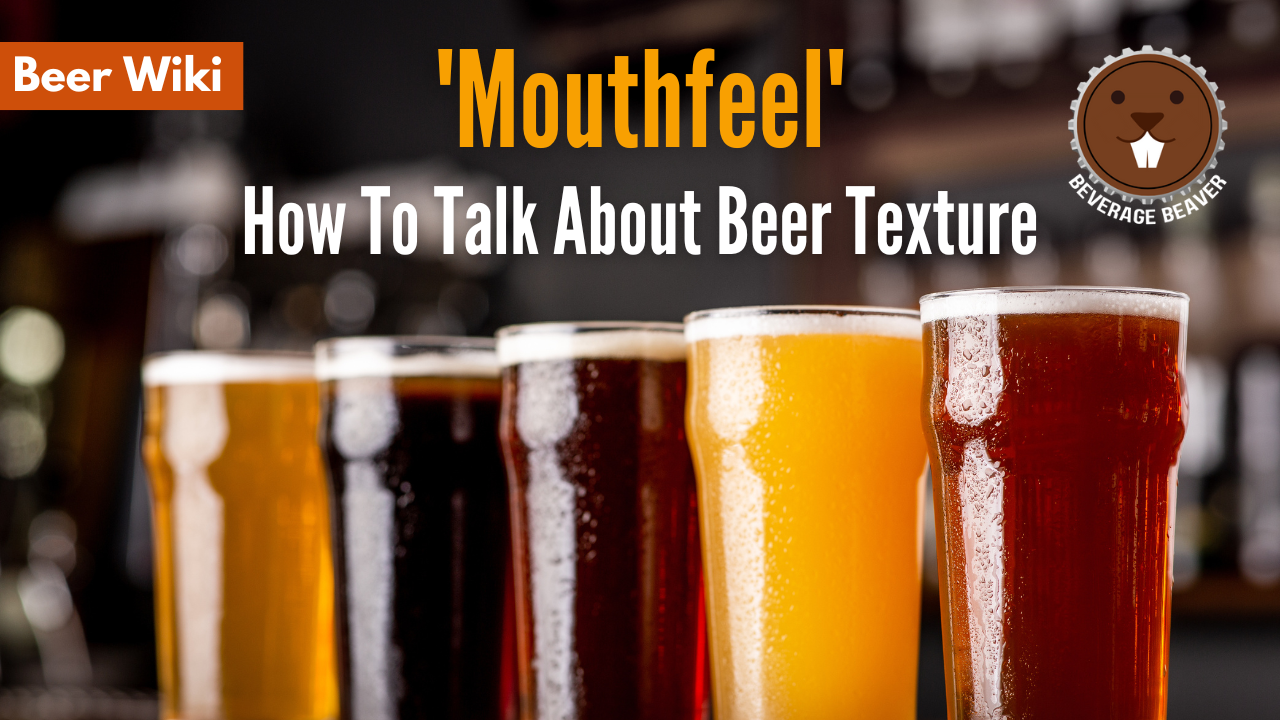Mouthfeel In Beer Tasting | How To Talk About Beer Texture
If you’ve been researching different types of beer, then one term you’ve probably come across is ‘mouthfeel‘. In this guide, we will explain what mouthfeel means in regard to beer tasting, and provide you with an overview of the typical mouthfeel characteristics of several popular beer styles.
Mouthfeel Meaning
In the context of beer tasting, mouthfeel refers to the tactile sensation a beer imparts in the mouth. In other words, how it feels in the mouth. It encompasses various attributes of the beer’s texture and physical characteristics when consumed.
Here are the factors that can affect mouthfeel and the terms to describe these factors:
- Carbonation: The level of dissolved carbon dioxide in beer, which can make a beer feel effervescent and prickly or smooth and flat.
- Body: This describes the weight or thickness of a beer on the palate. Beers can be described as light-bodied, medium-bodied, or full-bodied. This is influenced by the malt content, alcohol, and other ingredients.
- Creaminess: Some beers, especially those served with nitrogen (like certain stouts), can have a creamy texture.
- Astringency: A puckering or drying sensation, often related to tannins or grains in beer. It can be considered a flaw if it is too pronounced and not intended.
- Viscosity: Refers to the thickness or thinness of the beer. A beer with higher viscosity might feel syrupy, while a low-viscosity beer might feel watery.
- Alcohol Warmth: Higher alcohol content beers might impart a warming or burning sensation in the mouth and throat.
- Oiliness: Some beers might have a slick or oily texture, influenced by certain ingredients or brewing techniques.
- Smoothness: The overall ease with which a beer flows and feels in the mouth.
When evaluating beer, especially in a formal setting or competition, mouthfeel is an essential aspect of the overall assessment. It can greatly influence a person’s perception and enjoyment of a beer. Ideally, the mouthfeel should complement the beer’s flavor profile and style. For instance, a heavy imperial stout should typically have a full body and a velvety texture, while a light pilsner might be more crisp and refreshing with higher carbonation.
Mouthfeel Characteristics Of Popular Beer Styles
The mouthfeel of a beer often corresponds to its style. Here’s a basic overview of the typical mouthfeel characteristics of several popular beer styles:
Pilsner
- Light to medium body.
- High carbonation.
- Crisp and refreshing.
IPA (India Pale Ale)
- Medium to full body, depending on subtype (e.g., Double IPAs tend to have fuller bodies than standard IPAs).
- Moderate carbonation.
- Some versions, especially New England IPAs, might have a softer or “juicier” mouthfeel.
Stout
- Medium to full body. Imperial stouts tend to be on the fuller side.
- Creamy, especially if nitrogenated.
- Low to moderate carbonation.
Porter
- Medium body.
- Smooth, with moderate carbonation.
Lager (like American Light Lager)
- Light body.
- High carbonation.
- Crisp and clean.
Wheat Beer
- Medium body.
- High carbonation.
- Often silky or slightly creamy due to the protein content from the wheat.
Saison
- Medium body.
- High carbonation.
- Often has a dry finish.
Barleywine
- Full body.
- Moderate to low carbonation.
- Viscous and sometimes syrupy.
Sour/Wild Beers
- Body can vary, but often on the lighter side.
- Carbonation can range from moderate to high.
- Astringency or puckering sensation is common due to acidity.
Belgian Dubbel/Tripel
- Medium to full body.
- High carbonation.
- Often effervescent and sometimes has a slight alcohol warmth.
Wrapping Up
As you can see, there is a lot that can influence the mouthfeel of a beer. Understanding the meaning of mouthfeel and how to judge the different aspects of mouthfeel is a vital part of the beer experience. Recognizing and appreciating these tactile nuances will undoubtedly enhance your journey through the world of beer. Cheers to a deeper, more textured appreciation of your next brew!

